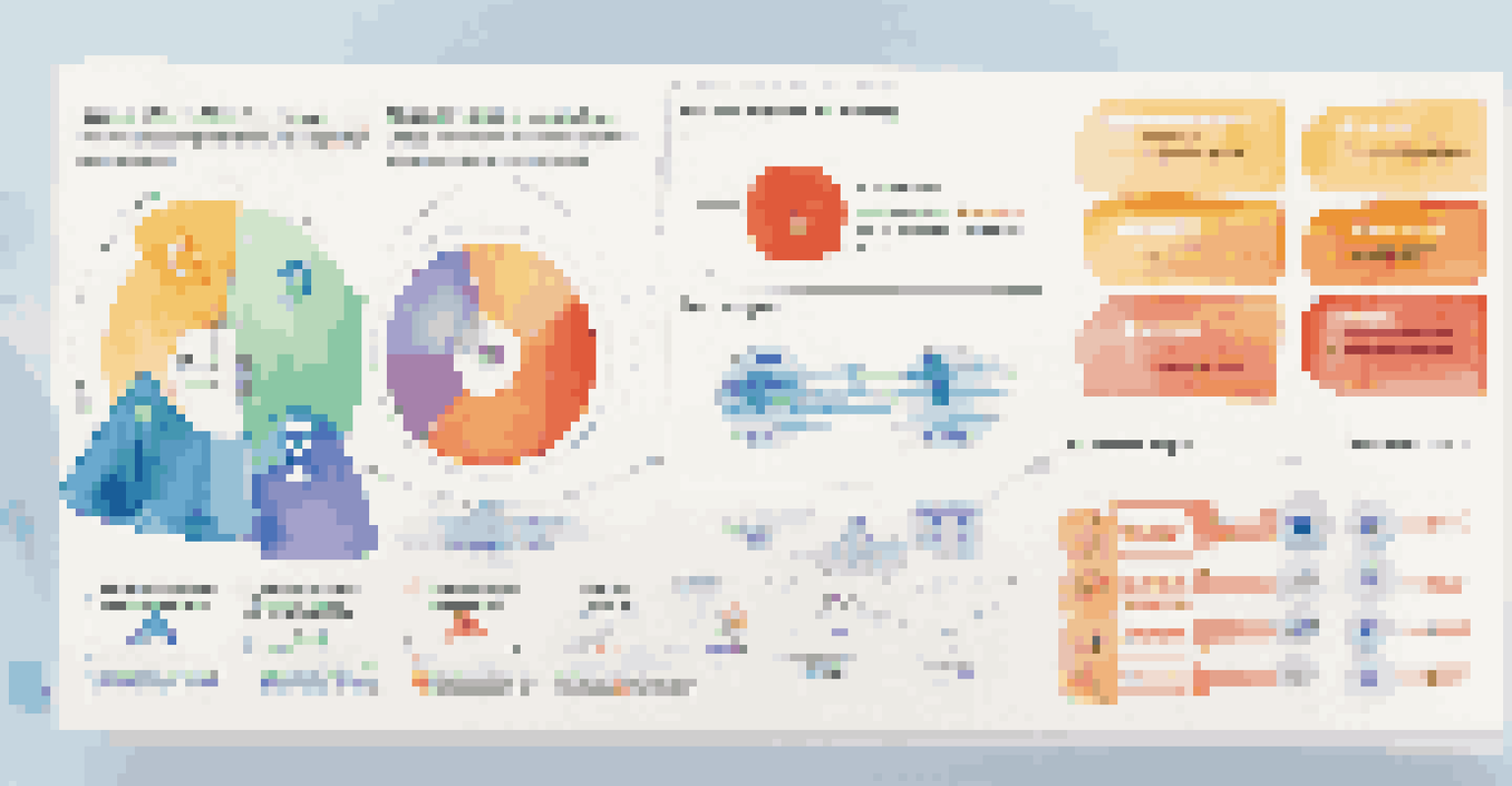The Role of User Feedback in SaaS Product Development

Understanding User Feedback in SaaS Development
User feedback is the lifeblood of any SaaS product, acting as a compass that guides development. It encompasses insights from users about their experiences, expectations, and challenges while using the software. By actively listening to these voices, developers can identify what works, what doesn’t, and what needs improvement.
Your most unhappy customers are your greatest source of learning.
The value of user feedback lies in its ability to highlight real-world use cases that might not have been considered during the initial design phase. For instance, a project management tool may have been developed with a focus on task management, but user feedback could reveal that collaborative features are equally important. This insight helps to prioritize future updates and enhancements.
Ultimately, embracing user feedback fosters a culture of continuous improvement. It transforms product development from a one-sided process into a collaborative journey, ensuring that the end product resonates with the users' needs.
The Types of User Feedback to Consider
User feedback can come in various forms, each offering unique insights into the user experience. Surveys and questionnaires can provide quantitative data, while interviews and focus groups yield qualitative insights that delve deeper into user perceptions. Additionally, monitoring user behavior through analytics tools can reveal patterns that feedback alone might miss.

For example, a SaaS company might use surveys to gauge overall satisfaction, while also analyzing usage stats to see which features are underutilized. This combination creates a fuller picture of the user experience, allowing developers to make informed decisions. It's akin to having both a map and a compass for navigating the development landscape.
User Feedback Drives Development
User feedback acts as a critical guide for SaaS developers, ensuring products evolve based on real user needs and experiences.
Incorporating diverse feedback types ensures that no stone is left unturned in understanding user needs. By triangulating data from different sources, teams can uncover hidden pain points and opportunities for improvement.
Implementing Feedback Loops in Development
Creating structured feedback loops is essential for integrating user insights into the development process. This approach involves regularly collecting feedback, analyzing it, and then acting on the findings. It’s a cycle that not only improves the product but also reinforces a sense of community among users, who see that their voices matter.
The customer’s perception is your reality.
For instance, a SaaS company might implement monthly check-ins to gather user input, followed by a quarterly review where they share updates on how feedback has influenced product changes. This transparency fosters trust and encourages more users to participate in the feedback process, creating a win-win situation.
Effective feedback loops ensure that development is not a one-time event but an ongoing dialogue. This continuous engagement helps keep the product aligned with user needs, ultimately leading to higher satisfaction and retention rates.
Prioritizing Feedback: What to Focus On
Not all feedback is created equal, and prioritizing which insights to act on is crucial. Teams should focus on feedback that aligns with the product’s strategic goals and user pain points. By categorizing feedback into themes, such as usability issues or feature requests, developers can streamline the decision-making process.
For example, if multiple users highlight a specific feature as confusing, it becomes a priority to address that concern. Conversely, if a suggestion is made by only a few users, it may be worth noting but not urgent. This targeted approach ensures that the most impactful changes are made first, maximizing resource efficiency.
Diverse Feedback Types Matter
Utilizing various feedback methods, such as surveys and analytics, provides a comprehensive understanding of user experiences and pain points.
By prioritizing feedback, teams can focus on making meaningful improvements that enhance the overall user experience. This strategic alignment helps maintain momentum in product development and keeps users engaged and satisfied.
Creating a User-Centric Culture in SaaS Teams
Fostering a user-centric culture within the development team is essential for effective SaaS product development. This means encouraging team members to put themselves in the users' shoes and consider how their decisions impact the end user. When everyone on the team values user feedback, it leads to more thoughtful and empathetic product designs.
For instance, holding regular workshops where team members can interact with users can spark innovative ideas and solutions. When developers hear firsthand about user challenges, it can ignite a passion for creating meaningful improvements. It transforms the team’s approach from being merely technical to being user-focused.
By embedding a user-centric mindset into the company's culture, the team is more likely to create products that genuinely resonate with users. This approach not only enhances the user experience but also drives loyalty and advocacy.
Measuring the Impact of User Feedback
Once feedback has been implemented, it’s crucial to measure its impact on the product. This can be done through metrics such as user satisfaction scores, retention rates, and net promoter scores (NPS). These indicators provide valuable insights into how well the changes resonate with users and whether their needs are being met.
For example, after rolling out a new feature based on user feedback, tracking user engagement can reveal whether the change was successful or if further adjustments are needed. This continuous measurement helps teams stay agile and responsive, allowing for quick pivots if the desired impact isn’t achieved.
Foster a User-Centric Culture
Embedding a user-centric mindset within development teams leads to more empathetic designs and improved user satisfaction.
Ultimately, measuring the impact of user feedback not only demonstrates the value of listening to users but also informs future development efforts. It creates a feedback loop where user insights lead to tangible improvements, further enhancing the overall product experience.
The Future of User Feedback in SaaS Development
As technology evolves, so too will the ways in which we gather and analyze user feedback. Emerging tools powered by artificial intelligence and machine learning are starting to offer more sophisticated means of understanding user behavior and preferences. This will enable SaaS companies to provide even more personalized experiences tailored to individual users.
For instance, AI can analyze user feedback at scale, identifying trends and sentiments that might be missed by human analysis alone. This can lead to more proactive adjustments and innovations, keeping products ahead of the curve. It’s like having a crystal ball that provides insights into user needs before they even voice them.

The future of user feedback in SaaS is bright, promising a more integrated and proactive approach to product development. By leveraging advanced technologies, companies can ensure they remain responsive to user needs, ultimately leading to greater satisfaction and loyalty.